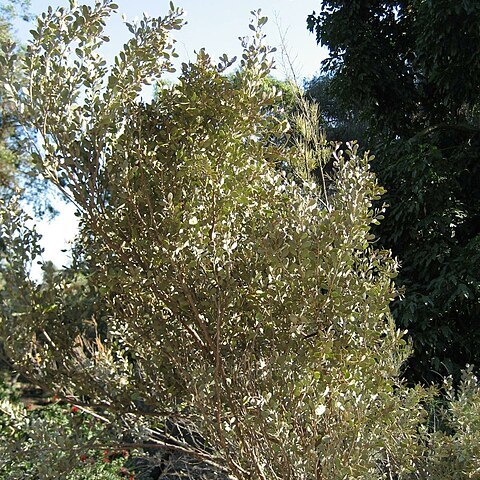Rounded or obconic, dense shrub 1–4 m talland about the same across, occasionally a tree to c. 5 m. Branchlets often resin-ribbed at extremities, with resin translucent; new shoots resinous, dark brown to black. Phyllodes elliptic to oblong-elliptic, obovate or occasionally orbicular, (1–) 1.5–3 (–4) cm long, 7–13 (–18) mm wide, rounded at tip, mucronulate, thick; with 1–3 longitudinal nerves and a fine reticulum between them; nerves often capped with greyish resin. Inflorescences single in axils; peduncles (4–) 6–15 (–20) mm long; spikes 7–20 mm long. Flowers 5-merous; sepals oblong, c. 1 mm long, stout, free; corolla c. 2 mm long. Pods not stipitate, flat, straight, massive, 4–6 (–7.5) cm long, 1.5–3 cm wide, including prominent wings 1.5–4 (–5) mm wide, thickly coriaceous to subwoody, yellowish to light brown, prominently reticulately nerved, glabrous, usually resinous. Seeds transverse, ±orbicular, 8.5–10.5 8 mm long, 7–9 mm wide, flattened; aril small, terminal, cupular, cream or pale yellow.
More
An evergreen tree. It grows to 3-4 m high and 2.5 m across. The stem is branched. The small branches are round in cross section and slightly hairy. The leaves (phyllodes) are 1.5 cm long and 5 mm wide. They are usually oval, leathery and with a wavy edge. The stalks are short and thick. The flowers are golden rods. They mostly occur singly. The pods are brown. They are broad and flat and heavily veined. They are 5-10 cm long by 3 cm wide. They contain 4 or 5 flattened seeds.


